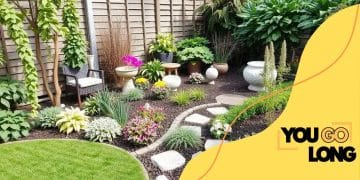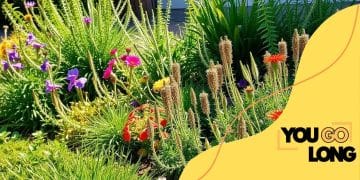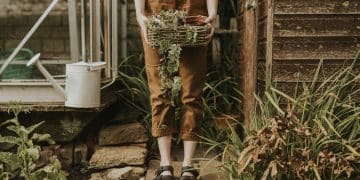Creating a sustainable garden with native plants
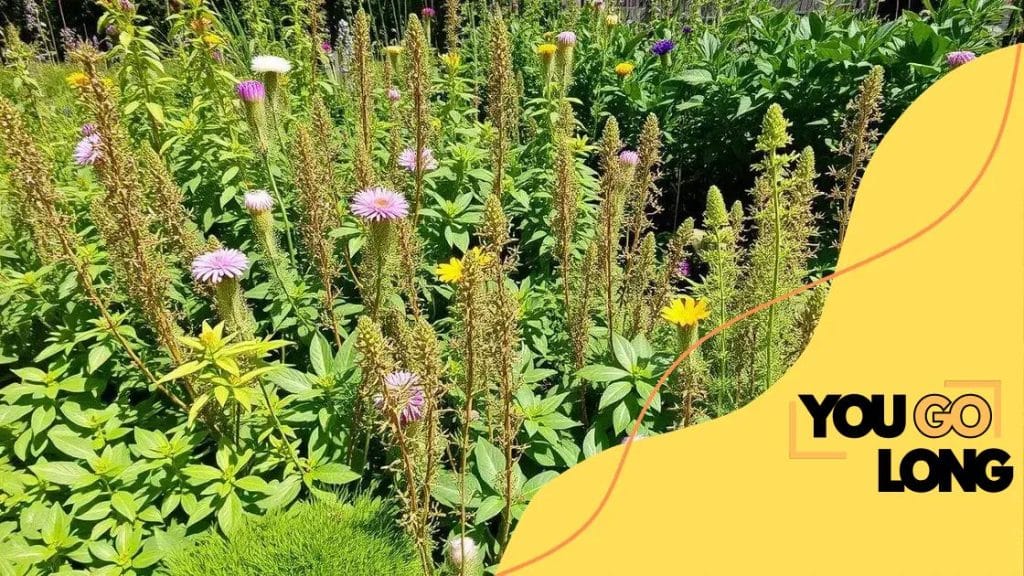
Advertisement
Creating a sustainable garden with native plants enhances biodiversity, requires less maintenance, and supports local ecosystems by providing food and shelter for wildlife.
Creating a sustainable garden with native plants can transform your outdoor space while benefiting the environment. Have you ever considered how your garden choices impact local wildlife and ecosystems?
Understanding the benefits of native plants
Understanding the benefits of native plants is essential for anyone looking to create a sustainable garden. These plants are adapted to the local climate, soil, and ecosystem, making them a perfect choice for your garden.
Moreover, native plants require less maintenance and water than non-native species. They are also more resilient to local pests and diseases, which can reduce the need for chemical treatments. This makes gardening with native plants not only environmentally friendly but also easier for gardeners.
Advertisement
Why Choose Native Plants?
Native plants play a crucial role in supporting local wildlife. Birds, bees, and butterflies often rely on these plants for food and habitat. By planting natives, you are helping to maintain biodiversity in your area.
- They provide essential food sources for local pollinators.
- Native plants help protect the soil by preventing erosion.
- They can improve water quality by filtering rainwater and reducing runoff.
- These plants are an integral part of local ecosystems and contribute to their health.
In addition to supporting wildlife, native plants can enhance the beauty of your garden. They often have stunning flowers, interesting foliage, and various colors that can attract attention. Using a mix of native species can create a visually appealing landscape that changes with the seasons.
Furthermore, choosing native plants can reduce the need for fertilizers and pesticides. Since these plants are naturally suited to the environment, they grow healthier and stronger without extra aids. As a result, you can create a garden that is not only beautiful but also less harmful to the environment.
Advertisement
Cost-Effectiveness of Native Plants
Investing in native plants can also be cost-effective. They typically require less water and maintenance, meaning lower costs over time. Once established, native plants can thrive with little additional care, saving you time and money.
The beauty of using native plants lies in their diversity and adaptability. From ground covers to small trees, there are options for every type of garden. By understanding their benefits, you will be better equipped to make choices that contribute to a sustainable and vibrant outdoor space. Your efforts will not only enhance your garden but also benefit the local ecosystem.
How to choose the right native plants
Choosing the right native plants for your garden is essential for creating a sustainable and thriving environment. It’s important to consider factors like climate, soil type, and sunlight when making your selections.
One of the first steps is to research local native species. Many regions have specific plants that naturally grow well in their ecosystems. Look for resources from local gardening clubs or extension services to find recommendations. Understanding your local environment will help you make informed choices.
Factors to Consider
As you begin to choose native plants, keep the following factors in mind:
- Climate: Ensure the plants you select thrive in your area’s climate.
- Soil Type: Different plants prefer various soil types, such as sandy, clay, or loamy soils.
- Sunlight: Determine if the plants need full sun, partial shade, or full shade to succeed.
- Water Requirements: Some native plants are drought-tolerant, while others may require more consistent moisture.
After narrowing down your options based on these factors, consider the overall design of your garden. A well-planned layout will enhance both the aesthetics and functionality of the space. Think about how different plants will complement each other in terms of color, height, and blooming times.
Combining Plant Types
It’s beneficial to mix various types of native plants. Consider including trees, shrubs, and perennials to create layers in your garden. This diversity not only increases visual interest but also provides food and habitat for wildlife.
For instance, planting a mix of flowering perennials can attract pollinators while incorporating shrubs can offer shelter for birds. Aim for a balance of colors and textures, ensuring that your garden remains vibrant all year round.
Lastly, be open to experimenting. Sometimes, plants may not perform as expected, and that’s okay. Gardening is a learning process, and each season teaches you what works best for your specific conditions. By observing how your garden evolves, you can refine your choices over time, leading to a more sustainable and beautiful space.
Designing a sustainable garden layout
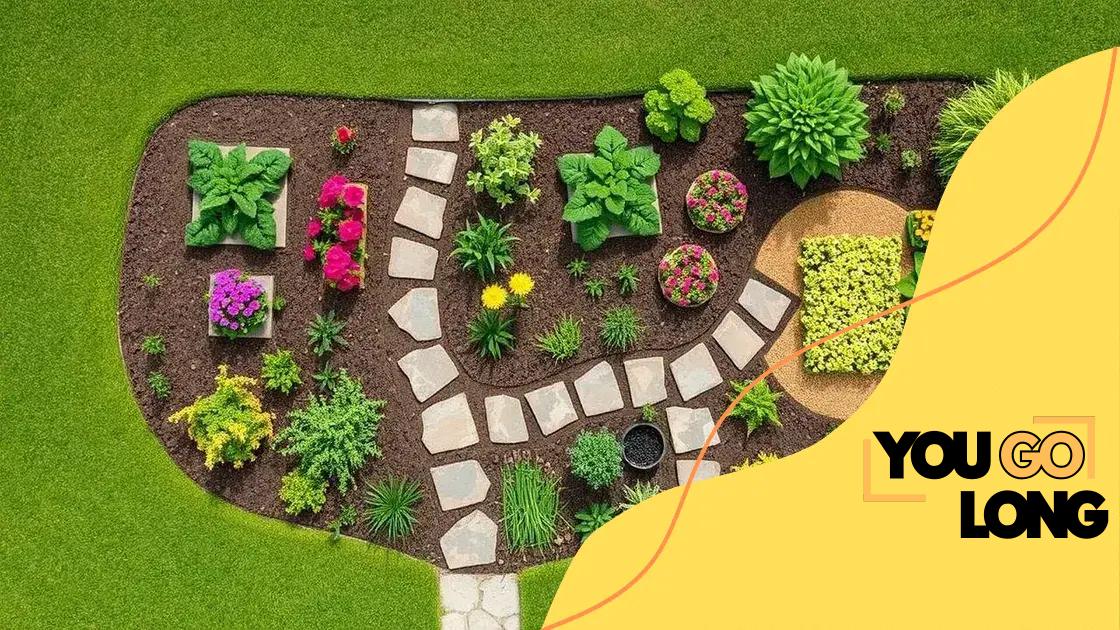
Designing a sustainable garden layout involves strategic planning and creativity. By focusing on native plants and their natural growth patterns, you can create a beautiful and functional space that benefits the environment.
Start by assessing your garden’s size and shape. Consider how much sunlight different areas receive throughout the day. This will determine which plants will thrive in each section of your garden. Grouping plants with similar light and water needs can make maintenance easier.
Creating Zones
Establishing zones within your garden helps organize different plant types. You might create zones for:
- Vegetable and herb garden: Near the kitchen for easy access.
- Flower beds: Featuring vibrant native flowers to attract pollinators.
- Shrub areas: Providing structure and habitat for wildlife.
- Seating areas: Creating spaces for relaxation and enjoyment.
These zones not only enhance the overall appearance of your garden but also improve its functionality. Each zone can serve a purpose, making your gardening experience more enjoyable.
Incorporating Pathways
Pathways are important in garden design as they connect different areas and facilitate access. Use natural materials like stones or mulch to create paths that blend in with the surroundings. This connection makes it easy to tend to plants and enjoy your garden without trampling the soil.
Adding visual interest is key when designing a layout. Consider varying the heights of plants by placing taller specimens in the back and shorter ones in front. This layering technique showcases your plants and creates a sense of depth.
Include features like rocks, logs, or water elements to enrich biodiversity. These additions can provide shelter and food for local wildlife, enhancing the ecological health of your garden.
Finally, think about seasonal changes. Choose plants that bloom at different times throughout the year to ensure your garden remains vibrant, providing visual appeal and supporting pollinators all year long.
Maintaining your native plant garden
Maintaining your native plant garden is essential for its success and sustainability. These plants are generally low-maintenance, but they still require attention to thrive.
Regular watering is important, especially during dry spells. Native plants often adapt well to local conditions, but newly planted specimens might need extra hydration to establish their roots. Water them deeply to encourage deeper root growth.
Weed Management
Weeds can compete with your native plants for nutrients and water. Regularly check your garden for unwanted plants. Pull them out by hand or use mulch to suppress their growth.
- Mulching: A layer of mulch helps retain moisture and reduces weed growth.
- Monitoring: Regularly inspect your garden to catch weeds early.
- Removing: Pull weeds out by the root to prevent regrowth.
Another important aspect is pruning. Prune any dead or overgrown branches to encourage new growth and maintain the shape of your plants. This will keep your garden looking neat and vibrant throughout the seasons.
Pest Control
Even though native plants are more resistant to pests, occasional issues may arise. Regular inspections can help identify any problems early. Use organic pest control methods when necessary.
Natural predators, such as ladybugs and lacewings, can help manage pests without harming your plants. Encourage these beneficial insects by providing habitats such as sheltered areas or wildflower patches.
Lastly, remember that a sustainable garden is a learning journey. Keep an eye on how your plants respond to care or changes in the environment. Adapt your maintenance routine based on what you observe, ensuring your garden remains healthy and beautiful.
Encouraging local wildlife in your garden
Encouraging local wildlife in your garden can transform your space into a thriving ecosystem. By creating a welcoming environment, you invite birds, butterflies, and beneficial insects to visit and help maintain the balance.
Start by planting a variety of native plants that provide food and shelter for wildlife. Native species are better adapted to local conditions and serve as a habitat for local fauna. Including flowering plants will attract pollinators like bees and butterflies, while berry-producing shrubs can feed birds.
Water Sources
Providing water is crucial for attracting wildlife. Consider adding a small birdbath or a shallow dish filled with water. This will offer a necessary resource for drinking and bathing, especially during hot months. Ensure the water is fresh and change it regularly to keep it clean.
- Birdbaths: Install a birdbath to attract various bird species.
- Shallow dishes: Use shallow dishes for bees and other small creatures.
- Ponds: If space allows, a small pond can be an excellent habitat for frogs and dragonflies.
Another important aspect is creating shelter for wildlife. These habitats can range from simple brush piles to more complex structures like birdhouses and bat boxes. These shelters provide nesting and hiding spots for various species, offering protection from predators.
Creating a Balanced Ecosystem
To maintain a balanced ecosystem, consider minimizing the use of chemicals in your garden. Pesticides can harm beneficial insects and disrupt the food chain. Instead, embrace organic gardening practices to maintain a healthy environment.
Planting a diverse array of species will help improve resilience against pests. When plants are varied, they support a range of wildlife that can naturally keep pest populations in check. Overall, encouraging local wildlife in your garden not only enhances the beauty but also contributes to a healthier environment.
Lastly, observe your garden regularly. Take note of which species visit and how they interact with your plants. This knowledge will help you make informed decisions to further enhance your garden as a welcoming habitat.
FAQ – Frequently Asked Questions About Sustainable Gardening with Native Plants
What are native plants and why should I use them in my garden?
Native plants are species that naturally grow in your area. They are adapted to local conditions, require less maintenance, and support local wildlife.
How can I attract wildlife to my native plant garden?
You can attract wildlife by planting diverse native species, providing water sources like birdbaths, and creating shelter with brush piles or birdhouses.
What maintenance do native plants need?
Native plants typically require less water and fewer fertilizers. Regular watering, weeding, and occasional pruning will keep your garden healthy.
Can I design a sustainable garden in a small space?
Absolutely! A sustainable garden can thrive in a small area by using containers, vertical gardening, and selecting compact native plants.

